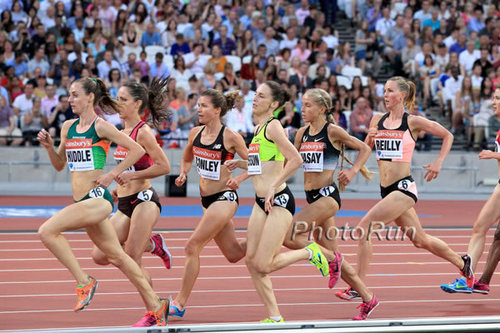Postcard from Moscow
by M. Nicole Nazzaro
Everything about Moscow seems huge and foreboding when you first land in the city. But then, bit by bit, the sheer size of the place begins to feel manageable, and the intimidation factor falls away.
You know how you felt about your big brother after you’d grown just as tall as him and realized he was just another person trying to make his way in the world? Moscow feels like that sometimes. It’s just another place on the map, but one with a fascinating, often troubled history.
Size and history come together today as the 2013 world championships begin at the stadium complex known as Luzhniki, the site of the 1980 Olympics. Today it’s both world-class track stadium and relic of an era in which bigger was always better, where Vladimir Lenin’s shadow loomed over all things Soviet, and where tanks and military parades demonstrated to the world the prowess of this place and its people.
What would Lenin have thought today, with the blue IAAF banners flying behind him at the stadium, welcoming the world in both English and Russian? A generation ago those statues of Lenin beckoning the workers’ class in that famous, arms-outstretched gesture of power and solidarity with the proletariat could be found everywhere. Finding a huge Lenin statue looking over us as we approached Luzhniki this week was a surprise. His image, his name, even his Red Square mausoleum are still here in Moscow. But the fear it engendered decades ago has fallen away. His name reminds us of a time when we understood each other far less than we do now.
The metaphor is apt for the track world. At the time of the 1980 Olympics, the Soviets were a feared sports machine. Today we know they were just as human as the rest of us. And if we didn’t truly accept that doping, whether state-sponsored or not, happens all over the world, the events of 2013 have surely taught us that lesson. Positive tests from Tyson Gay, Asafa Powell, and many other athletes have sobered us – not to mention the astonishing confession of Lance Armstrong, whom every European sports journalist worth their ink knew was doping far before the American public could accept the truth.
We’re all human. We’re all in this together. We all struggle. And we sometimes lose our way.
The American team here will not be able to duck the questions that would have been unthinkable a generation ago, now that drugs have taken away the luster of many of our supposed track superstars. It’s not just about the Soviet bloc anymore. All of us have to answer to what this sport has illuminated, not about the nature of countries or political systems, but the nature of people.
This is my sixth trip to Russia. I first came here weeks after Boris Yeltsin famously stood on a tank outside the Russian White House in 1991 to address the country after Soviet leader Mikhail Gorbachev was detained and the “Gang of 8” briefly took control of the country in an attempted coup. Bread lines were long and store shelves were almost empty – and an American exchange student was handed the same ration coupons for butter, cooking oil and vodka given to all city residents.
Yesterday I spotted that White House – huge, foreboding – in the distance as I walked on the bank of the Moscow River on my way to the World Trade Center to interview American athletes competing here. Expensive European cars whizzed by – unheard-of in the Soviet era. Construction crews building huge skyscrapers – now modern marvels of architecture, not Stalinesque box-style buildings – toiled in the summer heat.
We are all in this together. We all struggle. We all try to make our way in the world.
Seeing Russia today, welcoming the world track community a generation after the country almost fell apart, the struggles and the triumphs of this place and its history stand out in an astonishingly human way.
Today the world track and field championships begin in Moscow. Dobro pozhalovat’. Welcome.
Postcard from Moscow by M. Nicole Nazzaro, notes by Larry Eder
August 10, 2013
0
0
SHARES7
VIEWSSimilar Post
Leave a Reply Cancel reply
This site uses Akismet to reduce spam. Learn how your comment data is processed.
Subscribe to RunBlogRun's Global News Feed
Wake up to RunBlogRun’s news in your inbox. Sign up for our newsletter and we’ll keep you informed about the Sport you love.
*we hate spam as much as you do
- Trending
- Comments
- Latest
Popular Stories
Clyde Hart’s Guide to 400 meter training (from 1996 Super Clinic Notes/World Coaches Notes)
Noah Lyles, The Clock Doesn’t Lie
Abby Steiner replies via twitter, on the curiosity about her new professional running contract
An epic pole vault competition
Sha’Carri Richardson shows her rivals— and the athletics world — that she is number one
Recent Tweets
© 2022 Run Blog Run - All Rights Reserved






















